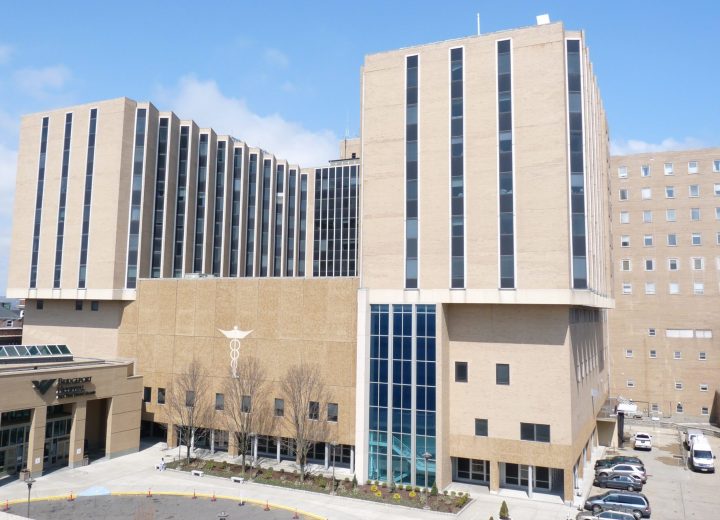Bridgeport Hospital
Building Enclosure Assessments and Repairs
Bridgeport Hospital, part of the Yale-New Haven Health System, is a private, non-profit facility located in a mixed-use commercial and residential area in Connecticut’s most populous city. The hospital’s ten-story patient towers date to 1956, with some additions and modifications in the 1960s. A new entrance, pedestrian bridge, and parking structure were added later, in the early 1990s.
Bridgeport Hospital retained Hoffmann Architects + Engineers to evaluate building conditions at the aging structure and recommend a cohesive, prioritized program of rehabilitation. Where inappropriate repairs had been made as short-term fixes, or poor design and construction practices employed, the Hospital requested that Hoffmann develop remedial solutions that would address underlying problems and respect building integrity.
To establish a priority of repairs based on urgency of the deteriorated conditions, Hoffmann’s design professionals began with a survey of existing facade and roof conditions. Forensic analysis further informed the recommended rehabilitation program, which was organized into multiple phases over several years. The firm’s architects and engineers outlined a scope of repairs, including estimates of probable construction costs, for the patient towers, pedestrian bridge, and parking structure elevator and stair towers, as well as the adjacent Ahlbin Center for Rehabilitation Medicine building, to restore weather integrity and structural stability.
Hoffmann Architects + Engineers provided design documents, bidding assistance, and contract administration services for remediation of water infiltration conditions, masonry distress, sealant joint deterioration, and avian infestation at the pedestrian bridge and parking structure elevator and stair towers. Hoffmann also designed and administered a full roof replacement at the Ahlbin Center. Following evaluations of the patient tower buildings in 2009 and 2016, Hoffmann undertook a re-assessment of the facades in May 2022 and recommended a comprehensive program of repairs to address both immediate, high-priority needs and long-term rehabilitation objectives.
